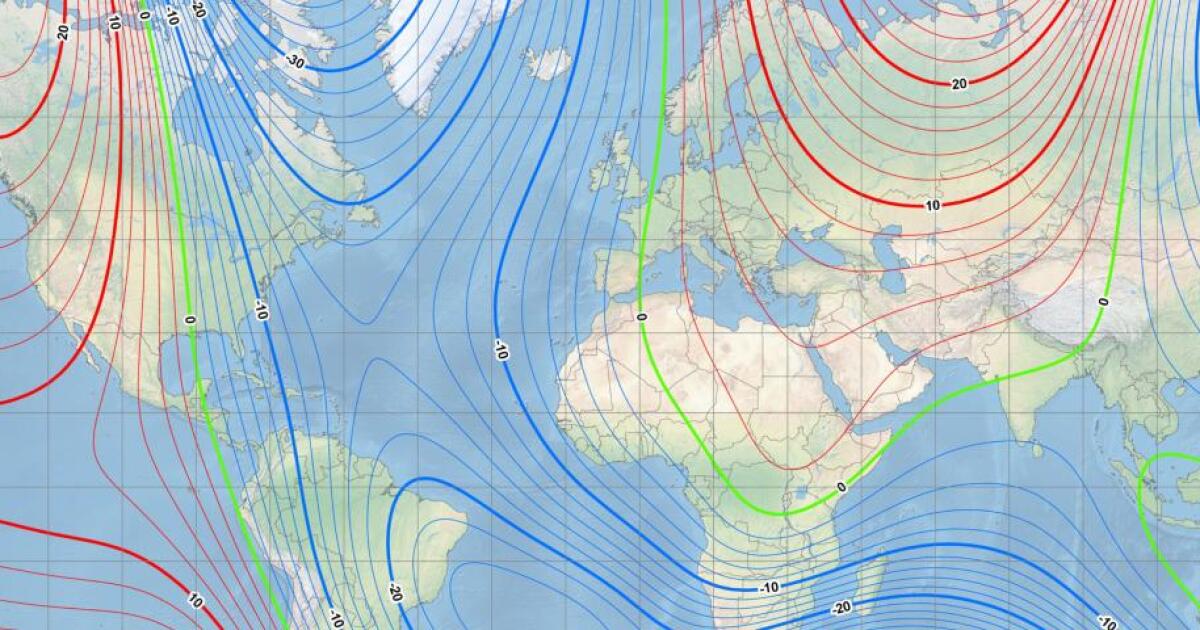Revised version of the World Magnetic Model (WMM) was released by the National Centers for Environmental Information (NCEI) in collaboration with the British Geological Survey (BGS). This updated model aims to forecast the movement of Earth’s magnetic field over the next five years, ensuring that global navigation systems remain accurate. The WMM update is part of a routine schedule and is crucial for a wide range of applications, including satellite navigation, smartphone location services, and maritime and aviation navigation systems.
Earth’s magnetic field, which plays a vital role in various technologies, is generated by the motion of molten iron in the planet’s outer core, located approximately 2,890 to 5,000 kilometers beneath the surface. This dynamic process, known as the geodynamo, sustains the magnetic field through the interaction of electric currents and magnetic forces. According to geophysicist Bruce Buffett from the University of California, Berkeley, without the geodynamo mechanism, Earth’s magnetic field would decay in just around 40,000 years. He likens the loss of the magnetic field to the cooling of a hot object exposed to the environment.
The magnetic north pole, unlike the geographic North Pole, is not fixed in place. It continuously shifts, driven by the dynamic motions within Earth’s outer core. Recent observations have shown that the magnetic north pole is migrating from the Canadian Arctic towards Siberia. This movement is caused by fluctuations in the strength and configuration of Earth’s magnetic field, and scientists are closely monitoring these changes to understand their impact on navigation and technology that depend on precise magnetic readings.
Tracking the magnetic north pole’s movements is essential for updating navigational models and ensuring that systems relying on magnetic field data, such as compasses and GPS, continue to provide accurate positioning. As the magnetic field evolves, scientists rely on models like the WMM to make predictions and adjustments, helping to prevent errors in navigation that could arise from shifts in the magnetic field’s strength or location. The updated World Magnetic Model is thus an important tool for maintaining the precision of systems that many industries and everyday technologies rely on.











